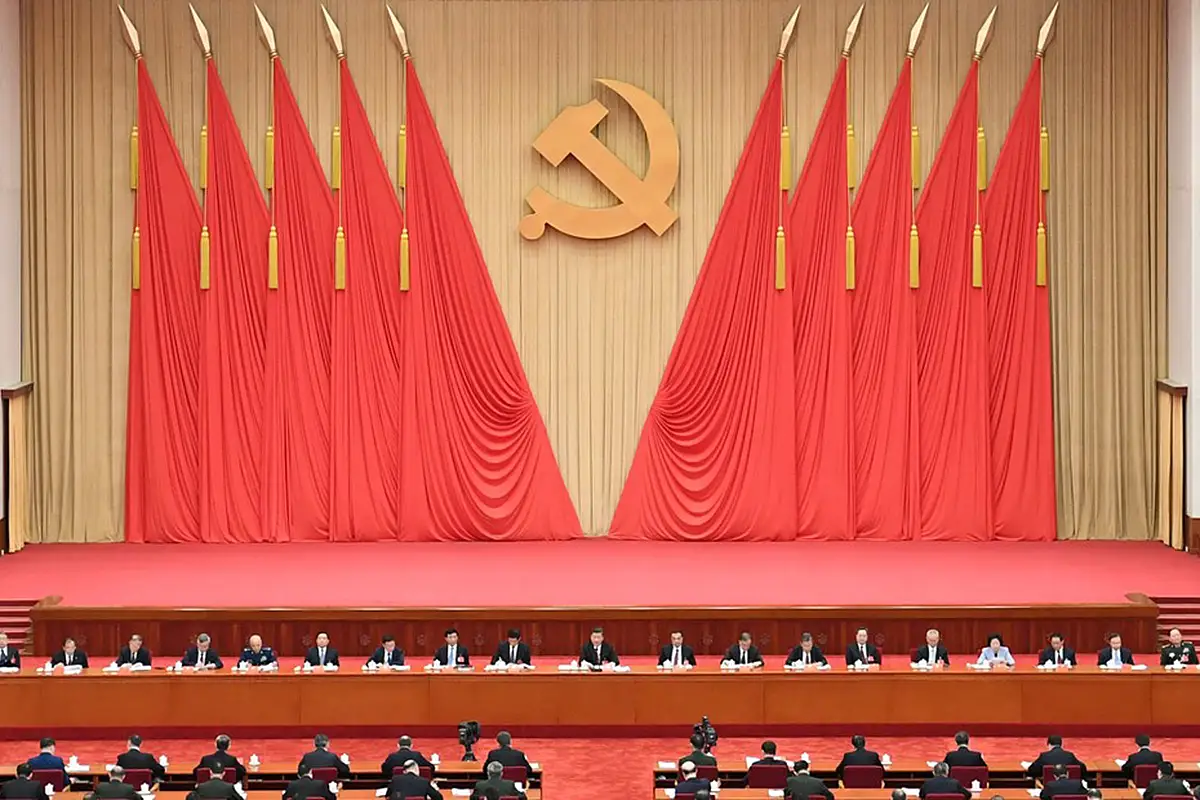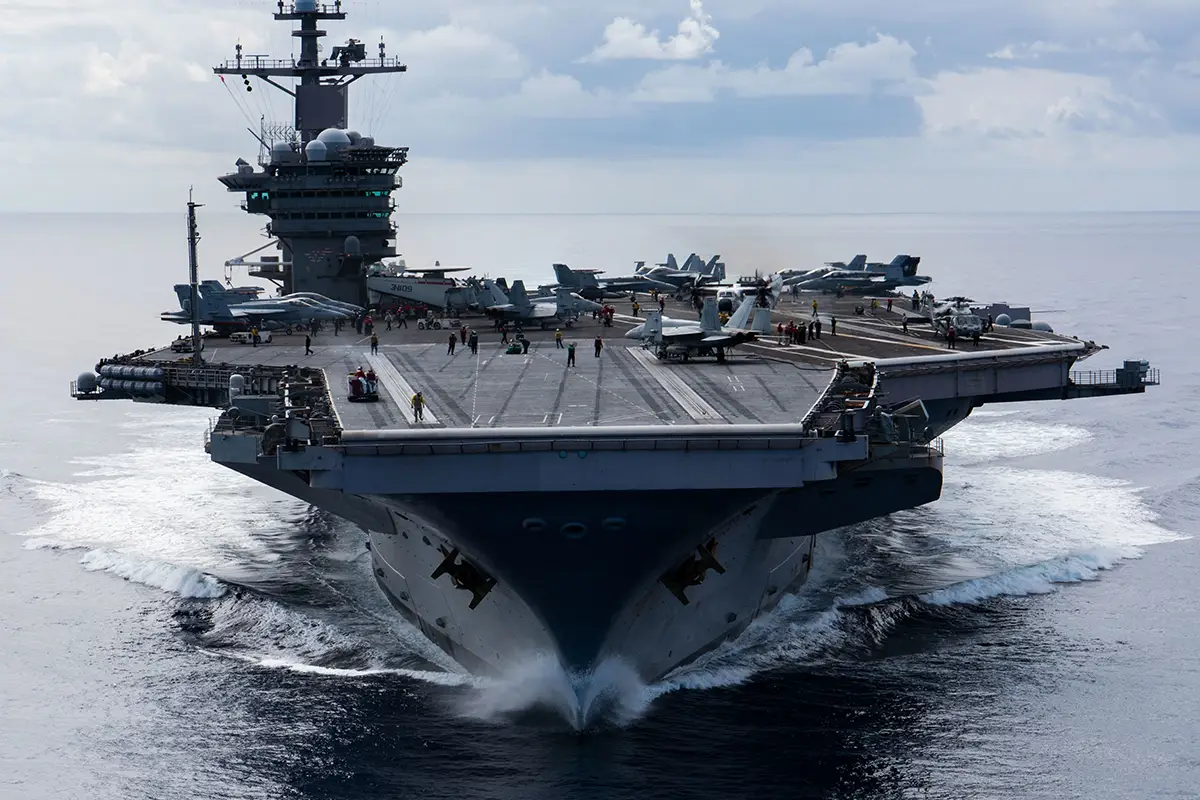The multinational response to the humanitarian crisis in Tonga revealed strengths and weaknesses in the force postures of Indo-Pacific nations. After the January 15 eruption of an underwater volcano and the tsunami triggered by the explosion, countries in the region called on their militaries to deliver urgently needed aid and assistance to the island kingdom. This article examines the response of U.S., ally and partner militaries to the Tonga crisis and contrasts their coordinated efforts with the Chinese military’s unilateral delivery of aid. The article concludes with four insights on the comparative ability of Indo-Pacific militaries to project power and respond to crises in the future.
Roles of U.S., ally and partner militaries
The armed forces of the U.S. and its Indo-Pacific allies and partners played key roles in the immediate response to the crisis in Tonga. They did so through several lines of effort, including the following:
Determining the extent of the damage. Australia and New Zealand, owing to their comparative proximity to Tonga, were able to quickly dispatch air reconnaissance assets and collect information for damage assessments. On January 17, a Royal Australian Air Force (RAAF) P-8 Poseidon aircraft and a Royal New Zealand Air Force (RNZAF) P-3K2 aircraft collected imagery on damage to Tongan infrastructure. The imagery was shared with Tongan authorities to help them make decisions about specific requests for support. Over the following days, these and other countries’ fixed-wing and rotary-wing military aircraft carried out additional reconnaissance flights over Tongan islands.
Airlifting relief supplies. Humanitarian aid could not be flown into Tonga for days after the January 15 eruption due to a layer of volcanic ash covering the runway at Fua’amotu International Airport. Hundreds of civilian and Tonga Defense Service personnel were eventually able to clear the runway, doing so largely by hand. On January 20, the RNZAF flew a C-130 Hercules out of Base Auckland Whenuapai carrying aid such as water containers, generators, and communications equipment, and sent a second C-130 loaded with supplies two days later. Additional flights carrying humanitarian aid included the first of two Japanese C-130 aircraft that arrived in Tonga on January 22 and two RAAF C-17A transport aircraft that departed for Tonga on January 24.
Sealifting relief supplies. The U.S. and its allies sent multiple aid-bearing naval ships, whose cargo holds can carry far larger volumes of supplies than transport aircraft. Some of the ships left before aircraft deliveries began but arrived later due to their slower speeds. The Royal New Zealand Navy’s (RNZN) sustainment ship Aotearoa arrived at Nuku’alofa port on January 21 with bulk water supplies and other requested materials. The U.S. Navy destroyer USS Sampson delivered aid to Tonga on January 24, the same day that the transport ship Osumi — loaded with equipment for clearing volcanic ash — set off from Japan. Ships from multiple countries participating in relief efforts, including the U.S., Australia, France and the U.K., received resupply as sea from the RNZN’s Aotearoa.
Coordinating aid requests and available resources. The response to the Tonga crisis involved many U.S. allies and partners, and Tongan authorities requested a wide variety of supplies and materials. To better support this mission, Australia’s Headquarters Joint Operations Command (HQJOC) established a Humanitarian and Disaster Relief (HADR) International Coordination Cell that brought together defense personnel from Tonga, Fiji, Japan, France, New Zealand, Australia, the U.K. and the U.S. The newly established cell would coordinate efforts to ensure that supplies requested by Tonga were delivered and that efforts among countries were not duplicated.
The Chinese military’s delivery of aid
Notably absent from HQJOC’s HADR International Coordination Cell were representatives from China’s armed forces. Rather than work with other countries’ militaries, the People’s Liberation Army (PLA) delivered aid to Tonga on its own.
On January 26—more than a week after Australia and New Zealand’s first damage assessment flights over Tonga and six days after the RNZAF’s first delivery of aid—China’s Defense Ministry announced that the PLA would send two batches of relief supplies to Tonga.
The first batch of supplies was carried by two PLA Air Force Y-20 heavy transport aircraft, which departed from the southern Chinese city of Guangzhou on January 27. The Y-20s reportedly stopped over three times to refuel at airfields between China and Tonga, a journey of about 10,000 kilometers. Chinese media offered little detail on the flight path taken by PLA Air Force aircraft, but the locations in which they stopped over to refuel appear to have been in Indonesia, Papua New Guinea and Fiji. The two Y-20s arrived at Fua’amotu International Airport on January 28, carrying between them some 33 tons of water, food, personal protective equipment and other relief supplies.
China’s second batch of aid to Tonga was carried by two naval ships that set off from Guangzhou on January 31. Between them, the PLA Navy’s landing platform dock Wuzhishan and replenishment ship Chaganhu carried more than 1,400 tons of aid, which included “mobile homes, tractors, generators, water pumps and purifiers, food and medical equipment.”
Insights for Indo-Pacific force posture
The ways in which the militaries of the U.S. and its allies and partners responded to the crisis in Tonga differed significantly from the Chinese military’s provision of aid. This contrast yields several insights for force posture and power projection in the Indo-Pacific:
U.S. allies and partners offer a geographic advantage for rapid response. The U.S. has military bases across the globe, but it is not omnipresent. As Australia and New Zealand’s reconnaissance flights on January 17 highlight, there are cases in which ally or partner militaries have facilities and platforms closer to the location in which an emergency arises.
Interoperability between U.S. and ally forces increases operational efficiency. Routine training and exercises between the U.S. and its key Indo-Pacific allies enable them to save time and resources in the course of operational execution. The resupply at sea tasks completed by the RNZN’s Aotearoa, for example, freed up time that U.S., Australian, French and U.K. ships would otherwise have spent pulling into port for replenishment.
China’s Y-20 may be less capable than previously suggested. Chinese media indicated that the two aid-bearing Y-20s stopped over three times to refuel on their journey to Tonga. While the distance from Guangzhou to Nuku’alofa is long (around 9,200 kilometers as the crow flies), the need to refuel three times is eyebrow-raising, given claims of the aircraft’s performance in past Chinese media reporting. A 2020 article posted on the PLA’s official English-language website claimed that the Y-20 could carry a payload of 60 tons or more for up to 7,800 kilometers without refueling. If this were true, it would follow that the two Y-20s—carrying a much smaller payload of 33 tons total between them—should have easily been able to make it to Tonga with one stopover at most.
PLA power projection hinges on ad hoc decisions by other countries. PLA Y-20s stopped over in at least two foreign countries on their way to Tonga. While it is natural to approve stopovers of military aircraft on humanitarian missions, the same would not necessarily be true during a crisis or conflict. This uncomfortable reality could motivate the PLA to gain overflight access or refueling agreements with more Indo-Pacific countries in the near term. In the longer term, China’s military may seek to establish one or more bases in the Pacific Islands (recent media reporting suggests Beijing may already be laying the groundwork). One may expect China to cite the PLA’s delivery of aid to Tonga as an example of providing public goods and the rationale for a Chinese military base in the Pacific ( similar arguments were articulated publicly prior to the establishment of China’s first overseas base in Djibouti).
Strategic considerations aside, one may take some comfort from the fact that assisting Tonga in its time of need is a mission that militaries of opposing countries can all support. HADR remains one item on a vanishingly small list of topics in which the U.S. and Chinese militaries maintain regular exchanges amid “great power” or “strategic” competition. Tonga will likely require more help in the near future, as on February 7, the island kingdom reported its first COVID cases. Whether the U.S. and China work separately or in concert, if the end result is more aid and assistance to the Tongan people, then they will have done some good.
The views expressed are those of the author and do not necessarily reflect those of CNA or any of its sponsors.



